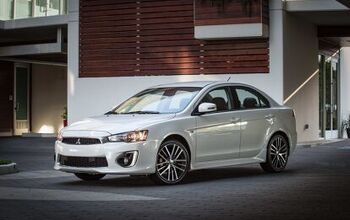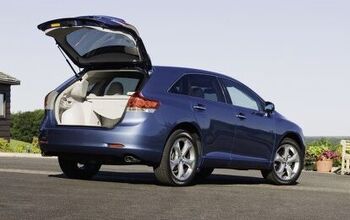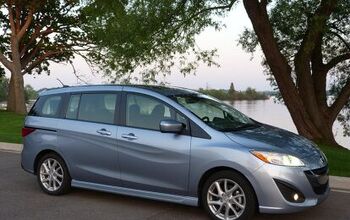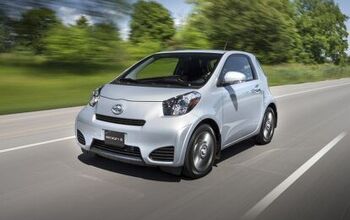The Cadillac ELR Is Dead: Here's Why
In the first paragraph of Car And Driver’s first full test of the 2014 Cadillac ELR, K.C. Colwell wrote, “The ELR’s entry price is nearly double that of the Volt.”
By paragraph two of the New York Times first ELR review, the Grey Lady called it, “bracingly expensive.”
AutoGuide called the ELR, “Surprisingly good, disappointingly expensive.”
Money undeniably played a big role in bringing the Cadillac ELR’s short life to an end. We knew months ago that the ELR wouldn’t make it through to a second-generation. Now we know that production of the Cadillac ELR, only 29 months after launching in December 2013, has come to an end.
While closely related to the first-generation Chevrolet Volt — which was by no means a marketplace success itself — General Motors upped the ante with the ELR, asking $76,000 for a front-wheel-drive coupe, a coupe that couldn’t crack 60 mph in less than eight seconds, a coupe that was a relative of a $35,000 Chevrolet.
But the ELR wasn’t just a Chevrolet Volt twin. There was unique suspension, added features in the car’s drivetrain, a genuinely premium interior, and exterior styling that looked like nothing else on the road, aside from Cadillac’s own CTS Coupe, which the automaker similarly discontinued.
It didn’t matter. From the start, consumers didn’t take to the ELR. Demand was all but nonexistent. A letdown after a hot launch? Not at all. There was no hot launch to speak of, no hype-infused rush of buyers to Cadillac dealers, no interest in forking out serious coin for an impractical coupe when its technology seemed three-years-old and the all-electric Tesla Model S was enticing 1,500 buyers per month.
Just how rare was the ELR? Cadillac sold just 2,697 ELRs in the United States between December 2013 and April 2016. In the ELR’s best month, August 2014, only 196 left Cadillac showrooms. The following month, volume tumbled 43 percent. One year later, in August 2015, ELR sales were down 77 percent, the third month in a half-year span during which ELR volume would plunge 60 percent.
And it’s not as though U.S. Cadillac ELR sales were legion before the sharp decline. In that best month of August 2014, uncommon vehicles such as the Lincoln MKT, Lexus LX570, Mercedes-Benz G-Class, Mini Paceman, Scion iQ, Acura RLX, and Nissan GT-R all managed to outsell the ELR — at its peak.
To get an idea of the likelihood of spotting a Cadillac ELR ahead of you in the Starbucks drive-thru, consider the fact that, all-time, Mercedes-Benz USA sold more SLS AMGs than Cadillac has sold ELRs. The Chevrolet SS sedan, which no man hath ever seen at any time, produced more U.S. sales in calendar year 2015 than the ELR has all-time. Between the end of 2004 and the end of its run in 2007, U.S. sales of the Ford GT totalled 3,596 units, exactly one-third more than the ELR has during its similarly lengthy lifespan.
In what turned out to be a last-ditch effort, Cadillac improved the ELR for the 2016 model year with what they called “a host of upgrades.” The ELR’s 0-60 time was cut by 1.5 seconds, GM said. The top speed was elevated. Suspension was stiffened for more athletic handling and, said GM, “more precise control with no loss of ride quality.” There was even a new grille and new Cadillac crest and a performance package with summer tires and Brembo brakes.
And the base price fell below $60,000, noteworthy if not for the fact that it was never assumed by any critic in his right mind that the 2014 ELR could cost more than $50,000; if not for the understanding that the consumers who were originally willing to spend money on an ELR received extraordinary discounts. Remember those incentives?
Yet the updates for the 2016 model year were far too little, far too late. The ELR was not in need of updating. The ELR was in need of a time machine that would take Cadillac product planners back to the circa 2009-2013 drawing board between the dawn of the Converj Concept and the launch of the ELR. Cadillac targeted the high-end coupe market when buyers were moving away from coupes. Cadillac targeted the green market with a range-extended gas-electric when the Tesla Model S was an all-electric performance wonder. Cadillac targeted an unknown group of reverse-Euro-snob Americans with a bizarre marketing campaign that required every facet of the ad to be explained away.
Cadillac flubbed it, reviewers flayed it, consumers flew the other way, and the ELR flopped. Don’t act surprised — the ELR’s demise was a story TTAC covered back when ELR sales were at their best.
Timothy Cain is the founder of GoodCarBadCar.net, which obsesses over the free and frequent publication of U.S. and Canadian auto sales figures. Follow on Twitter @goodcarbadcar and on Facebook.
More by Timothy Cain
Latest Car Reviews
Read moreLatest Product Reviews
Read moreRecent Comments
- Redapple2 Like the color but would never buy. Gladiator? Love them. (but some say they drive super wonky?)
- Redapple2 Note to layman. Lifts change the resting angles of suspension components. Then add full length of travel in the duty cycle and now you are repeatedly doing things to the suspension was never design for. Failures are very common and fatal. Do it only if you are stupid.
- Redapple2 Stampings vs castings>? If you go casting, you ve entered one of the most complex corners of manufacturing. In aluminum? 30 different popular alloys. 8 Core methods. 10 Casting methods. 5+ Heat treat options. Then we can talk about what metal to make the mold out of. The layman has no idea how complicated this gets.
- BlackEldo Anal grotto is NOT going to be happy about that H/K engine quip...
- Tassos GOOD CAR GOOD PRICE. MILEAGE IS DECENT CONSIDERING HOW LONG HONDAS LAST. THUS SPOKE REAL TASSOS. BIDEN DOLLARS



































Comments
Join the conversation
Many of the B&B here finally seem to get it; the problem with the ELR was not its price, but rather its performance. As BTSR points out, it's small inside, and most cars on the road could dust it. Lots of other cars sell for $80k, but the ELR was outclassed by them all.
Most of the reasons given for the failure of the electric doorstop could apply to all current Cadihacks - if they aren't cramped they are expensive; if they are roomy they are tacky looking. If it has four doors you can't come equipped with legs to sit back there.